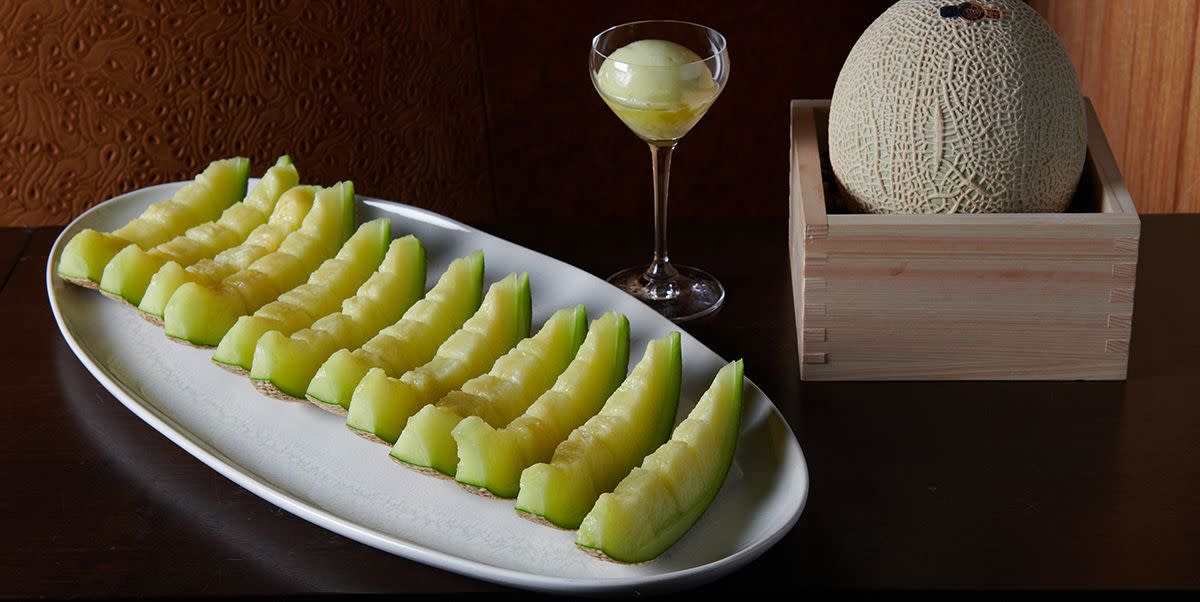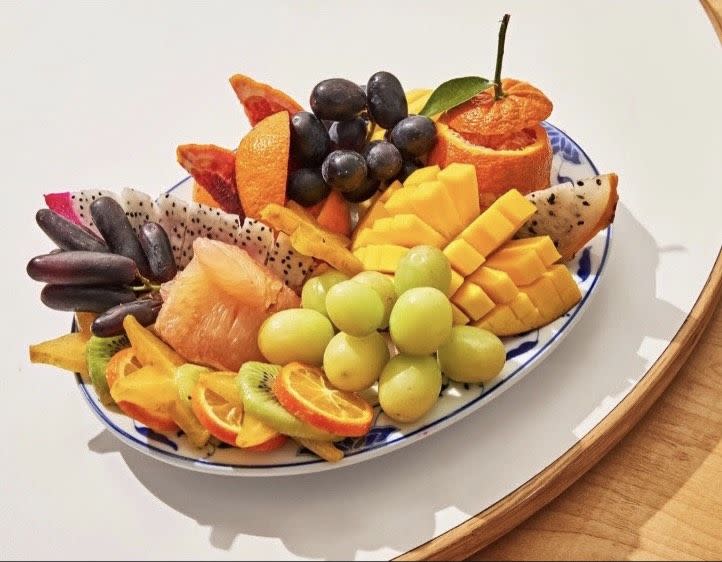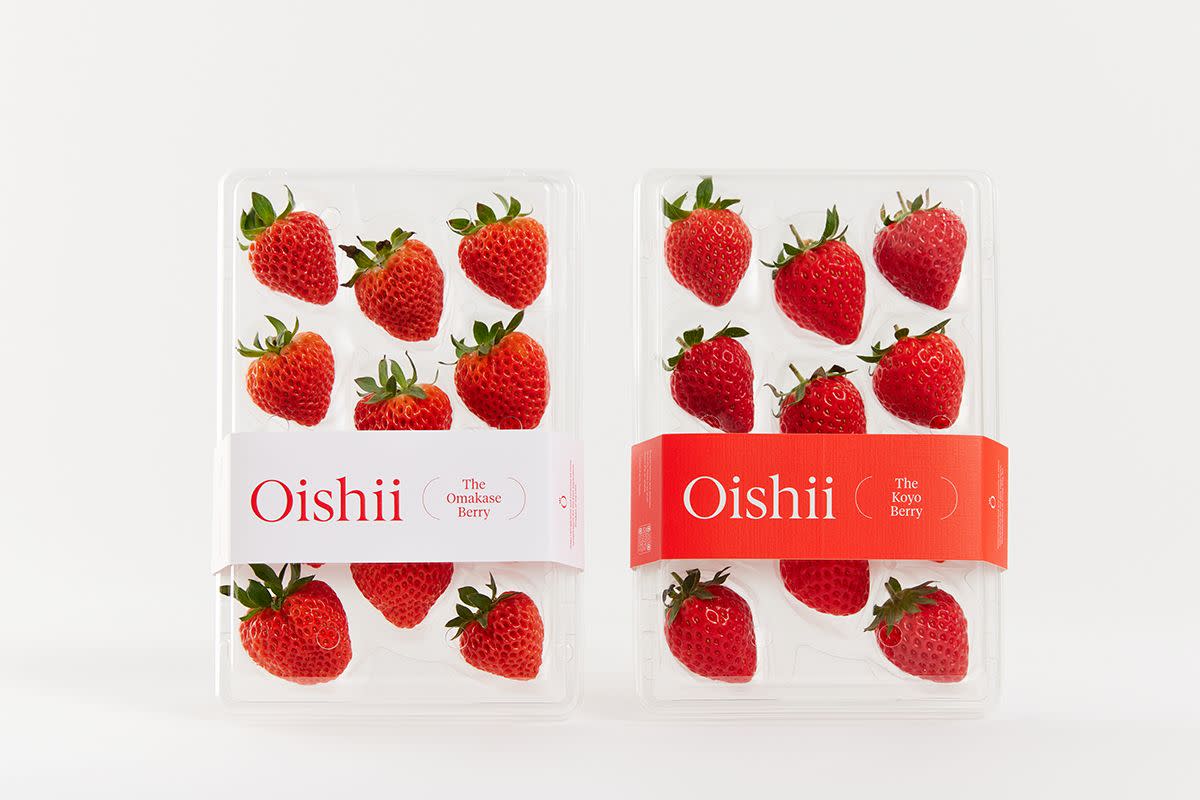A $250 Melon Begs the Question: Is Fruit the New Caviar?

It's often said that health is wealth, and these days more and more menus are proving it. At some of the most exclusive eateries around the world, a once-humble ingredient is stepping into the spotlight, becoming a flex for diners in the know, and boasting a price tag commensurate with its newfound status.
Take, for example, the Japanese Crown Musk Melon—sometimes known as the “King of Melons”— which can cost as much as $200 each. Meticulously cultivated for over 100 years in Japan’s Enshu Region (the westernmost part of Shizuoka Prefecture, which receives the most hours of daylight), dedicated artisans give daily massages to each melon as well as tightly control and monitor the temperature and humidity of their growing environment for 100 days before harvesting. As there is only one melon per stem, opposed to one stem bearing multiple pieces of fruit, all the water content is concentrated into each precious piece of fruit.

This level of agricultural perfection has taken the fine dining scene by storm. It has caught the attention of Rene Redzepi, chef of NOMA in Copenhagen, who has been posting Instagram stories about it as he prepares for the restaurant’s upcoming Kyoto residency. A slice of this sweet, fragrant melon is served with a squeeze of yuzu and a garnish of shiso blossoms at the end of the meal at Jōji, the new omakase restaurant from Michelin-starred chef Daniel Boulud. But perhaps the most memorable Crown Melon presentation is at New York’s Sake No Hana, where for $250 (the most expensive item on the menu) a chef brings out a whole fruit, carves it table side, and presents a card certifying the story of the melon’s origins. With just 10 melons made available every two weeks, it's only a select group of big spenders who get to end a meal in this decadent fashion.
Slightly less rarefied, but no less deluxe, are the Omakase and Koyo berries from Oishii (“delicious” in Japanese), the innovative company behind the world’s largest indoor vertical strawberry farm. Using the latest in agricultural technology, Oishii has recreated the environment of the Japanese Alps—rain, air, heat, light, and nourishment—to create perfect non-GMO berries all year round. The Omakase berry made Instagram-famous by celebrity foodies like Gywneth Paltrow and Chrissy Teigen, and served by top chefs like Jihan Lee (Nami Nori), César Ramirez (Chef’s Table at Brooklyn Fare), and master baker Dominque Ansel, is prized for its unique sweetness, creamy texture, and heady aroma. The newly introduced Koyo berry seeks to evoke summer memories with its unique fragrance, balanced acidity, slightly firm texture, and undeniable sweetness. Both varieties, which are $3 per berry (a relative bargain compared to the Crown Melon), are available at select Whole Foods and specialty foods shops.

In the end, the Asian tradition of serving beautifully prepared—and sometimes rare— fresh fruit, has nothing to do with luxury and everything to do with love. Whether offered to esteemed visitors to your home, as dessert at the end of the meal, or to a child studying for an exam, a plate of delicious fruit is a way to say you care.
“In Asian communities, fruit is commonly used as a love language," says Tristan Kwong, the "fruit somm" behind the crowd-pleasing fruit plate at Bonnie’s, the red hot Cantonese-American eatery in New York City. "Oftentimes if you have an argument with your parents, they won't come say 'I'm sorry' to you, they'll just bring you a plate of cut fruit. It's their way of saying I love you. They labor over popping the tops off of your strawberries, or peeling, cutting, and coring that apple as a means to show you that they care."
For those willing to splurge on these lavish varieties, saying "I care," whether to yourself or to someone you love, has never been more delicious.
You Might Also Like
